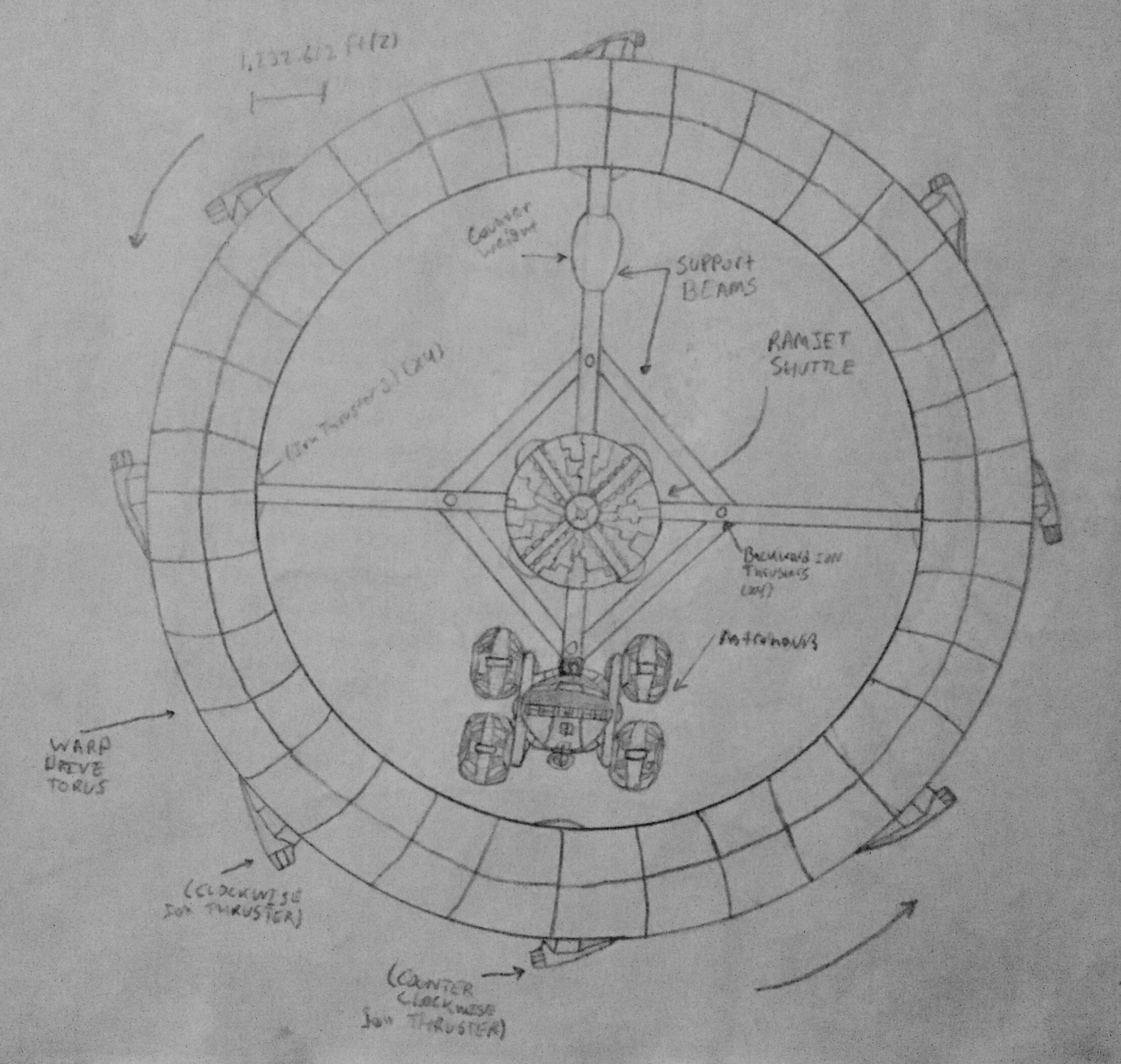HOME | DD
 Quintessence-Reality — DSRC Interstellar Warp Drive Torus Module
Quintessence-Reality — DSRC Interstellar Warp Drive Torus Module

#spacecraft
Published: 2017-02-24 01:20:44 +0000 UTC; Views: 1390; Favourites: 5; Downloads: 5
Redirect to original
Description
As I mentioned in my sketch of the Astronavis spacecraft, a module exists for warp speed travel. In order for the Astronavis to be an interstellar spacecraft in a short timeframe, it must dock with a warp module that allows it to travel up to twelve times the speed of light (even though it is technically not moving).In this future reality, DSRC had gone through many obstacles trying to make this FTL technology practical for application by the early 22nd century. They mainly relied on super-intelligent AI to fill in the primary hurdles and go through countless designs and testing.
The torus has vacuum contained pico-engineered exotic matter for the desired negative energy synthesis. During the activation of the drive, the exotic matter is focused inside the torus to create a bubble or ellipsoid of negative energy around the craft. This has the effect of warping the dimensions of space/time around the craft where there is frontal space/time contraction, basically a gravity well, and a rear space/time inflation. As a result, the ship rides a "ocean wave" of space and time to its destination. When turned off, the torus suppresses the concentration of exotic matter which results in the negative energy immediately flying off in all directions, dropping the ship out of warp. In other words, just like the magnetic field of an electro-magnet after being turned off.
The module also features a ramjet in its center for capturing fuel at locations like gas giants or high concentrations of interstellar hydrogen. The fuel either goes to the Astronavis's plasma/anti-matter drives (if for anti-matter, the hydrogen is femto-engineered into anti-hydrogen) or the module's maneuver thrusters.
The whole spaceship is capable of simulating artificial gravity by spinning using the rotation thrusters on the circumference of the warp module. To keep the rotation stable, a counter weight weighing the same as the Astronavis is added on the opposite side of the Astronavis docking port.
The module itself was constructed in space due to its shear size: 4,004 feet in diameter and 1,232.612 feet in width.
I based this concept on an existing model of warp drive called the "Alcubierre Drive" which was created by Mexican theoretical physicist Miguel Alcubierre.
Related content
Comments: 4

Hah, I was thinking of Alcubierre drive while reading the description, even before I saw you mention him at the end.
In wonder, what would happen if we drove this thing on a planet at FTL speeds...
👍: 0 ⏩: 1

If the ship as a whole could hover, it'd probably work but particles in the atmosphere would likely get stuck in the bubble's frontal gravity well. I'm not exactly sure if that'd be a problem. But of course, that could also happen in space with there being tons of dust particles, rocks, micrometeorites, and asteroids. I thought about having a cone shaped force field to protect against that but anything projected outward, energy or matter, will also get stuck in the gravity well and repelled by the gravity hill. Objects hitting the warp bubble is one of the huge bottlenecks with this idea.
👍: 0 ⏩: 1

I was rather thinking what would happen to the planet if it were hit by a FTL warp bubble...
👍: 0 ⏩: 1

Ah. My mistake. It'd probably disrupt the bubble since so much matter would be flying into the gravity well and it'd likely be enough concentration to destroy the ship.
👍: 0 ⏩: 0

























